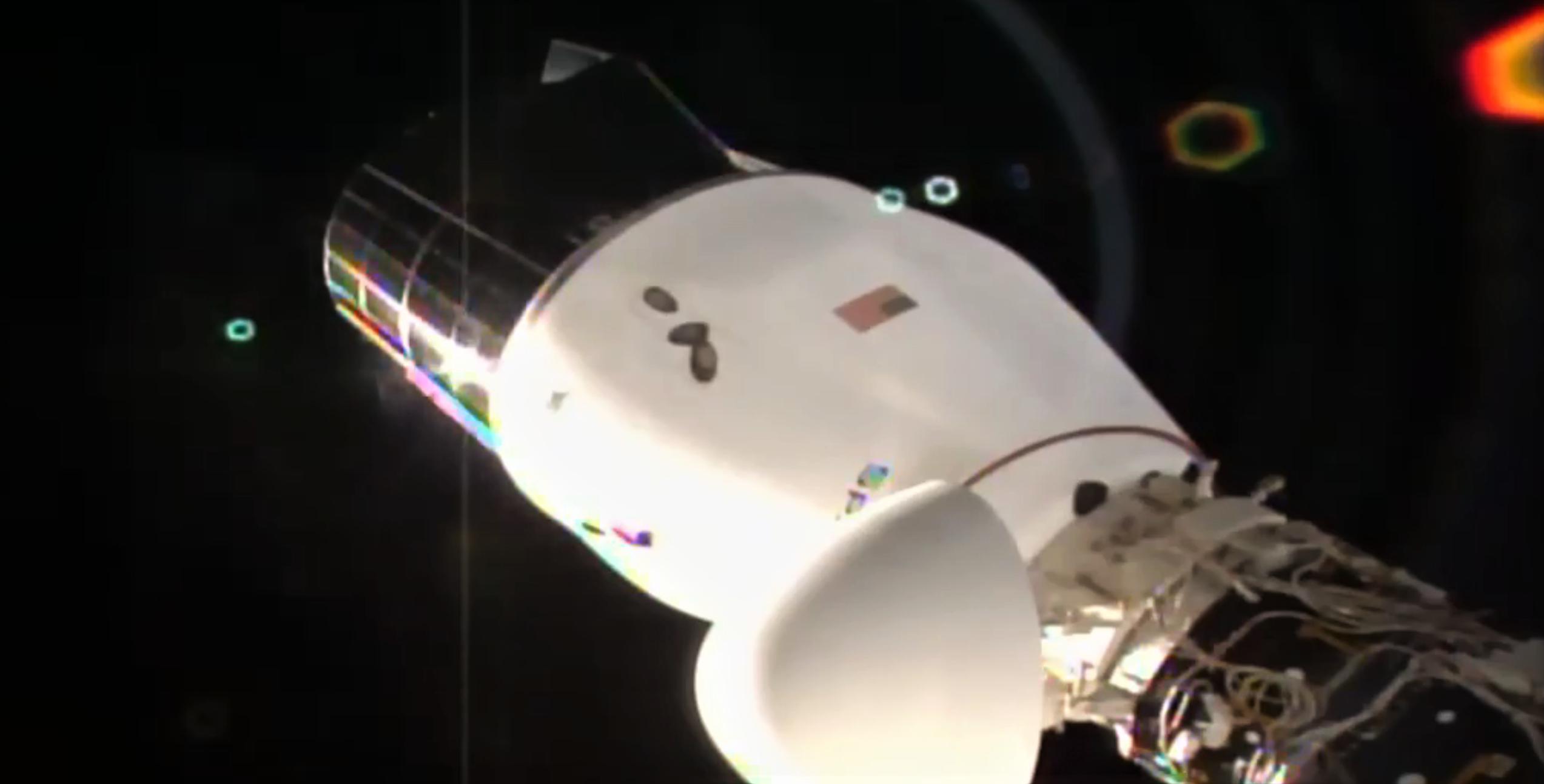
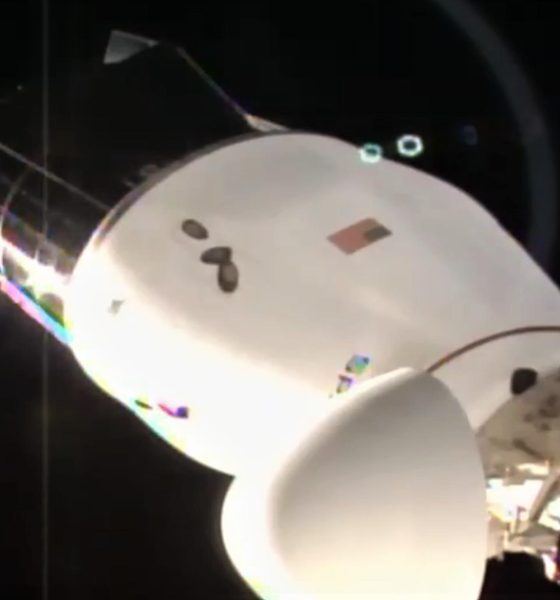
News
SpaceX’s first Cargo Dragon 2 recovery delayed by Atlantic Ocean weather
Update: The first undocking, orbital reentry, and splashdown of SpaceX’s upgraded Dragon 2 cargo spacecraft was aborted by NASA ground controllers minutes before the process was scheduled to begin. According to NASA, weather in the preferred recovery zone – off the coast of Daytona Beach, Florida – was to blame.
“As a result of adverse weather conditions at the targeted splashdown zone off the coast of Daytona Beach, Florida, SpaceX has waved off today’s planned departure of an upgraded SpaceX Dragon resupply spacecraft. Teams are currently assessing weather conditions to determine the next opportunity for undocking.”
NASA – January 11th, 2021
SpaceX’s upgraded Cargo Dragon spacecraft is just a day or two away from its first International Space Station (ISS) departure, Earth reentry, and ocean splashdown.
The uncrewed Dragon capsule (known as C208) and its expendable trunk section are currently scheduled to depart from the ISS no earlier than the morning (EST) of January 12th – set to be the first time an uncrewed US cargo spacecraft autonomously undocks from the orbital outpost. Previous US cargo vehicles – including SpaceX’s own Cargo Dragon – have relied on berthing, rendezvousing with the ISS and hovering close by while a giant robotic arm was used to capture and secure each spacecraft.
Cargo Dragon 2 wont be the first outright to do so: the uncrewed European ATV and Russian Progress vehicles both used the Russian Docking System (RDS) to deliver cargo to the ISS over the last two decades. However, Dragon’s CRS-21 departure will be the first time an uncrewed cargo spacecraft completes a full mission with the help of NASA’s new International Docking Adapter (IDA), as well as an IDA’s third round-trip use ever.
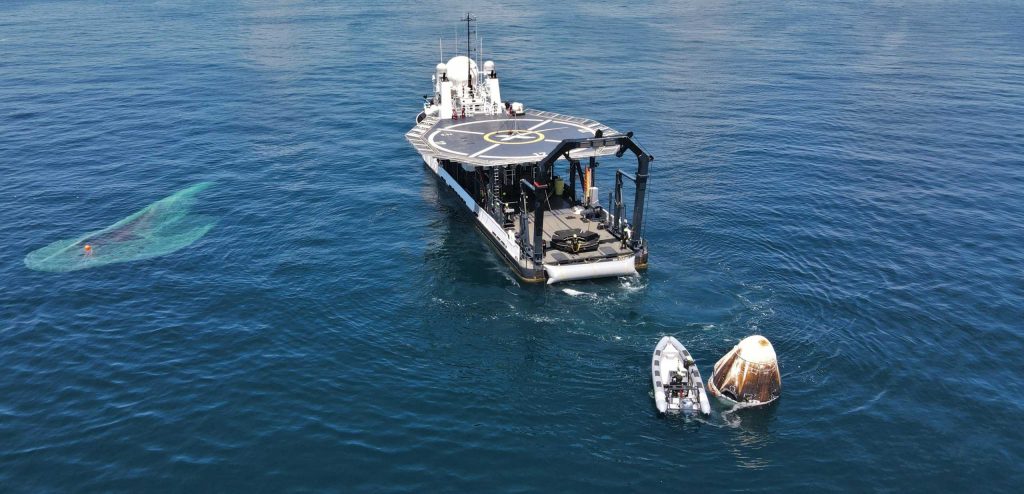
In fact, SpaceX is solely responsible for the four total uses of the Space Station’s twin IDA ports – both fittingly delivered by Cargo Dragons in 2016 and 2019. In March 2019, Crew Dragon – flying without astronauts on its Demo-1 mission – became the first spacecraft ever to autonomously dock with and undock from an IDA port. In May and August 2020, a separate Crew Dragon spacecraft repeated the feat, autonomously docking and undocking with two NASA astronauts onboard.
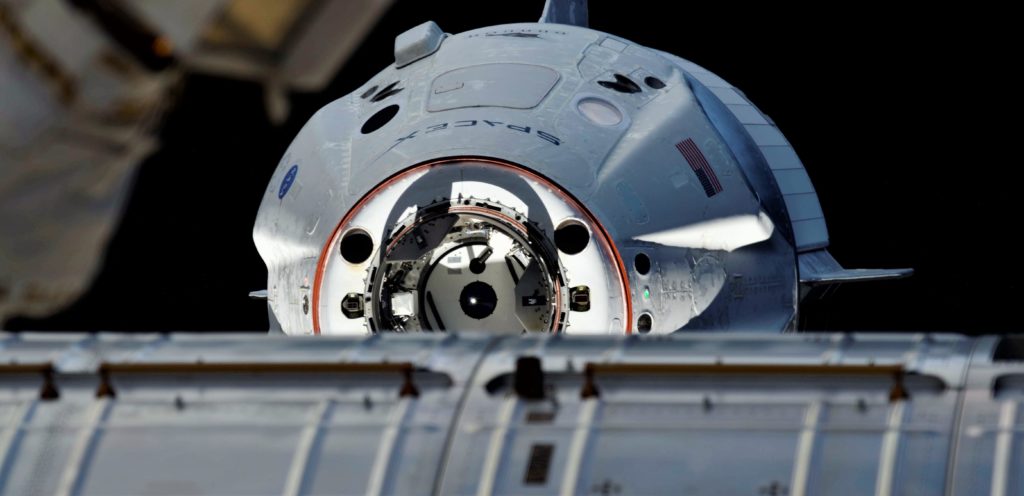
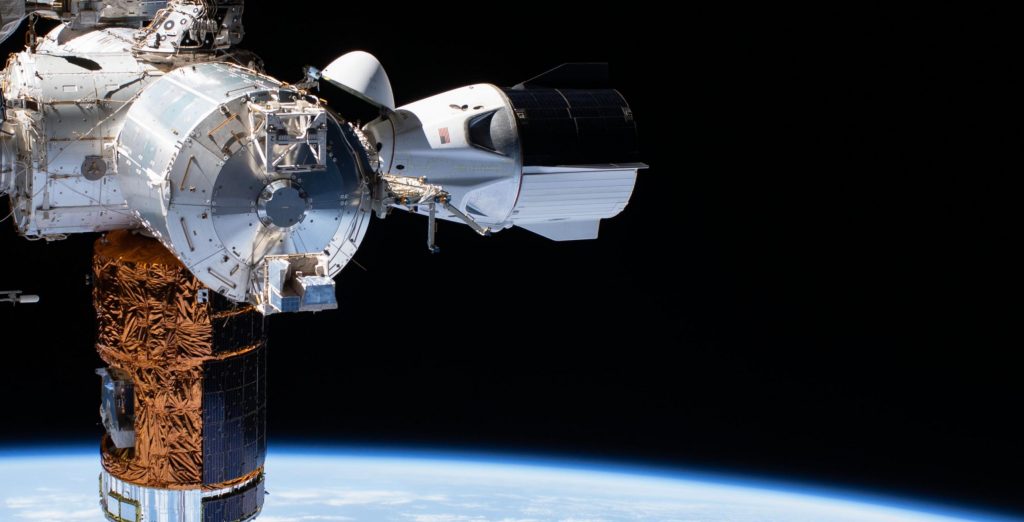
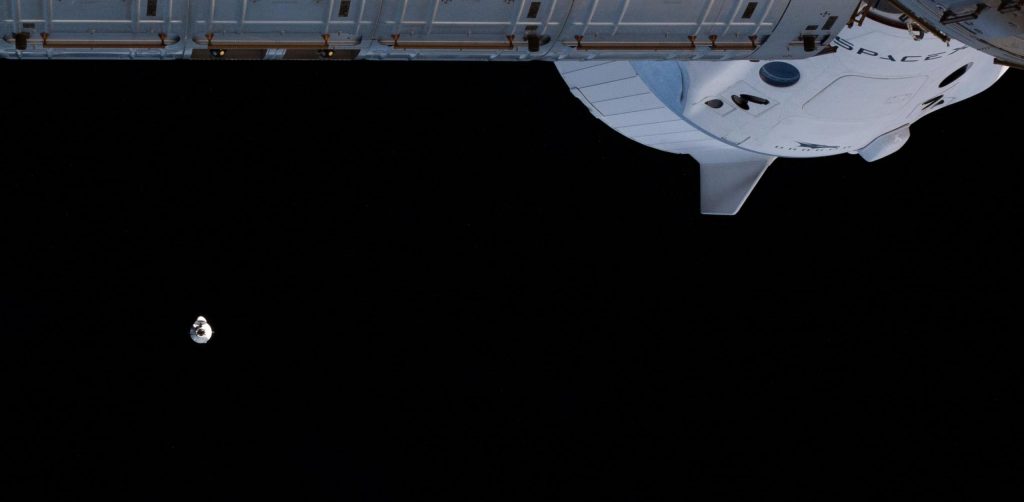
In November 2020, SpaceX launched Crew Dragon on its first operational ferry mission with four astronauts. The spacecraft safely docked to the ISS and is scheduled to remain there until at least March or April 2021. Most recently, SpaceX launched its first Cargo Dragon 2 on December 6th, 2020, and the spacecraft docked without issue a day later. Now scheduled to undock as early as January 12th, a successful departure, reentry, and splashdown will truly mark the start of a new era of autonomous SpaceX spacecraft.
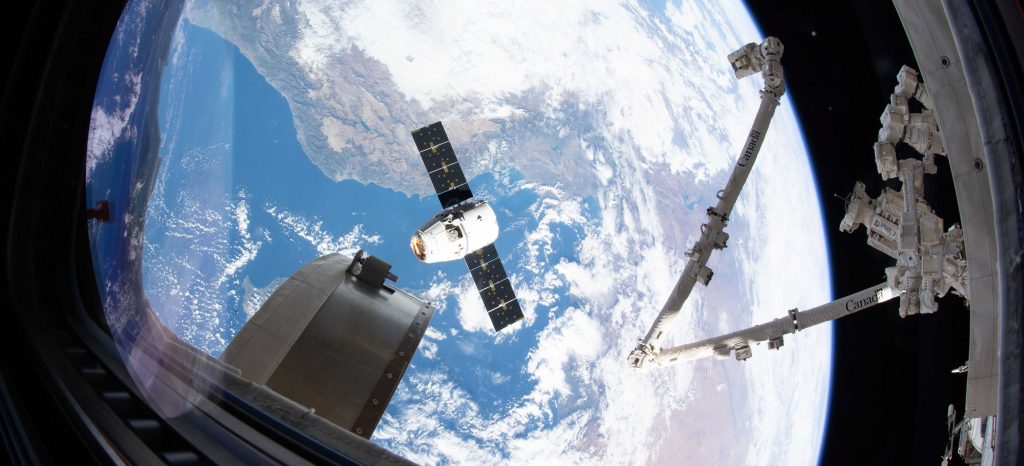
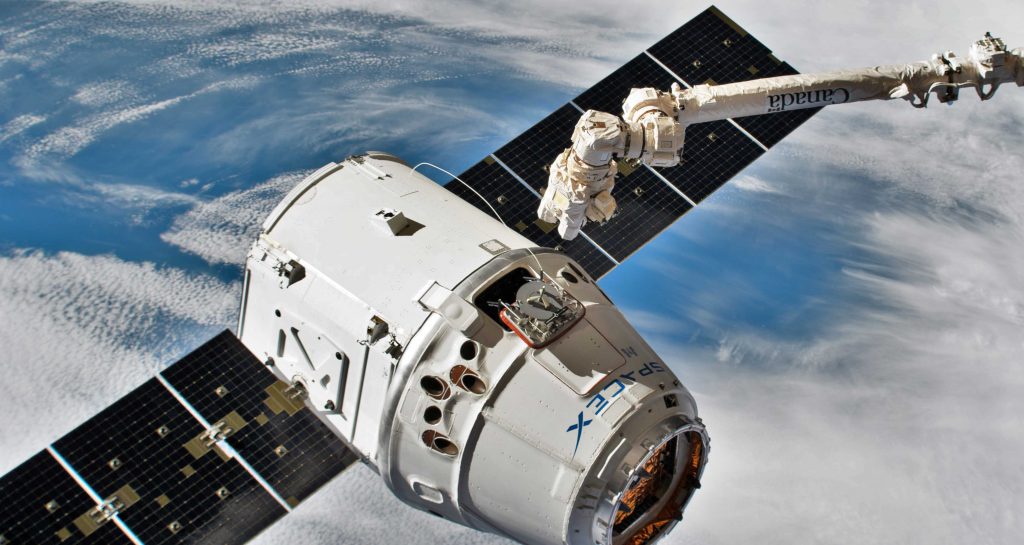
Unlike the largely manual berthing method used by Japanese HTV, Orbital ATK Cygnus, and SpaceX Cargo Dragon spacecraft, SpaceX’s Crew Dragon and Cargo Dragon 2 vehicles took advantage of IDA’s mechanical differences to heavily automate the cargo and crew delivery process. Using LiDAR, cameras, complex software, SpaceX’s new Dragons effectively dock themselves, ultimately requiring less training and work for the station astronauts that would otherwise need to manually support berthing operations.
Used to support refrigerated or otherwise power-intensive cargo, Cargo Dragon 2 features twice as many “powered lockers” as its predecessor and is scheduled to return an impressive ~2360 kg (5200 lb) of cargo – including dozens of science experiments – to Earth. More than a decade after Dragon became the first private spacecraft to successfully reenter Earth’s atmosphere, Cargo Dragon is still the only spacecraft in the world capable of delivering substantial cargo from Earth to orbit and from orbit to Earth.

After detaching from its expendable trunk section and reentering Earth’s atmosphere, Cargo Dragon C208 will also become the first cargo spacecraft to splash down in the Atlantic Ocean or Gulf of Mexico thanks to SpaceX’s decision to consolidate its California and Florida Dragon recovery operations on the East Coast.
Also used to recover Crew Dragons, SpaceX ship GO Searcher departed Port Canaveral for its central role in CRS-21’s imminent splashdown. Once Cargo Dragon C208 splashes down at one of four available recovery zones, SpaceX recovery teams will grab and secure the spacecraft and open its hatch. Uniquely time-sensitive cargo can then be transferred to a waiting helicopter for an unprecedentedly rapid return to researchers back on land,
Stay tuned for SpaceX and NASA’s live coverage of Cargo Dragon 2’s first ISS departure and recovery on January 12th or 13th.

Elon Musk
Elon Musk just said some crazy stuff about the Tesla Roadster

Elon Musk appeared on the Moonshots podcast with Peter Diamandis today to discuss AGI, U.S. vs. China, Tesla, and some other interesting topics, but there was some discussion about the upcoming unveiling of the Roadster, the company’s electric supercar that will arrive several years after it was initially slated for release.
Musk made some pretty amazing claims about the Roadster; we already know it is supposed to be lightning-fast and could even hover, if Tesla gets everything to happen the way it wants to. However, the car has some pretty crazy capabilities, some of which have not even been revealed.
On the podcast, Musk said:
“This is not a…safety is not the main goal. If you buy a Ferrari, safety is not the number one goal. I say, if safety is your number one goal, do not buy the Roadster…We’ll aspire not to kill anyone in this car. It’ll be the best of the last of the human-driven cars. The best of the last.”
🚨 Elon on the Roadster unveiling, scheduled for April 1:
— TESLARATI (@Teslarati) January 6, 2026
Musk makes a good point: people who buy expensive sports cars with ridiculous top speeds and acceleration rates do not buy them to be safe. They hope they are safe in case of an emergency or crash, but safety is not at the forefront of their thoughts, because nobody buys a car thinking they’ll crash it.
The Roadster is truly going to push the limits and capabilities of passenger vehicles; there’s no doubt about that. Tesla plans to show off the new version car for the first time on April 1, and Musk has only hinted at what is possible with it.
Musk said back in November:
“Whether it’s good or bad, it will be unforgettable. My friend Peter Thiel once reflected that the future was supposed to have flying cars, but we don’t have flying cars. I think if Peter wants a flying car, he should be able to buy one…I think it has a shot at being the most memorable product unveiling ever. [It will be unveiled] hopefully before the end of the year. You know, we need to make sure that it works. This is some crazy technology in this car. Let’s just put it this way: if you took all the James Bond cars and combined them, it’s crazier than that.”
Production is set to begin between 12 and 18 months after the unveiling, which would put the car out sometime in 2027. Hopefully, Tesla is able to stay on track with the scheduling of the Roadster; many people have been waiting a long time for it.
News
Tesla launches hiring for Robotaxi program in its twentieth country
Overall, the hiring signals Tesla’s aggressive timeline for global dominance in autonomous mobility.

Tesla has launched a hiring initiative for its Robotaxi program in its twentieth country, as the company posted two new jobs in Thailand this week.
Tesla is hiring in Bangkok and Kowloon for the Vehicle Operator position, which is related to data collection, and is the first in Thailand, but the twentieth country overall, as the company tries to expand into other markets.
🚨 BREAKING: Tesla is hiring additional full-time Vehicle Operators in Bangkok, Thailand.
Previous openings were 6-month, part-time roles. These are equivalent to AI Safety Operator roles in the U.S. pic.twitter.com/R6LzoU1bos— Tesla Yoda (@teslayoda) January 5, 2026
Tesla has had active job postings for Vehicle Operator positions in the United States, India, Israel, Taiwan, Germany, the Czech Republic, Hungary, the UK, Finland, Switzerland, Sweden, the Netherlands, Austria, Spain, Norway, Italy, and Turkey in past listings.
These postings are not all currently available, likely because the roles have been filled.
Thailand is the most recent, and broadens the company’s potential path to expanding its ride-hailing program, which is only active in the United States in Austin, Texas, and the California Bay Area, so far.
These roles typically involve data collection, which assists in improving Autopilot and Full Self-Driving operation. Tesla’s self-driving programs utilize real-world data that is accumulated and stored, observing vehicle and traffic behavior, as well as tendencies that are performed by human drivers to help increase safety and overall performance.
Overall, the hiring signals Tesla’s aggressive timeline for global dominance in autonomous mobility. Although the company has several high-profile rivals and competitors in the field, it has established itself as a main player and a leader in the development of autonomous technology, especially in the U.S., as its FSD suite is refined on almost a weekly basis.
The Full Self-Driving suite is available in seven countries and territories currently, including the U.S., Canada, China, Mexico, Puerto Rico, Australia, and New Zealand. Its biggest goal for expansion is currently the European market, where regulatory hurdles have been the main bottleneck prolonging its launch on the continent.
Tesla has performed months of testing in various European countries, including France and Spain, and does have support in some areas from various regulatory agencies. However, the company is hoping to get through this red tape and offer its suite in Europe for the first time, hopefully this year.
News
Tesla China rolls out Model Y upgrades, launches low-interest financing
These strategies are aimed at improving the ownership experience and keeping vehicle pricing competitive in the world’s largest electric vehicle market.

Tesla has rolled out minor updates to the five-seat Model Y in China, upgrading the vehicle’s center display to a higher-resolution 16-inch 2K screen. The electric vehicle maker also introduced attractive financing options, including 7-year low-interest rates, to offset the new purchase tax on EVs.
These strategies are aimed at improving the ownership experience and keeping vehicle pricing competitive in the world’s largest electric vehicle market.
Five-seat Model Y gets larger, better display
With its recent update, all three variants of the five-seat Model Y now feature an upgraded 16-inch 2K resolution center display, which replaces the vehicle’s previous 15.4-inch 1080p panel. This screen was already used in the six-seat Model Y L, and it offered improved visual clarity. Tesla China has also updated the Model Y’s headliner to black, giving the vehicle a sleeker appearance.
Prices of the five-seat Model Y remain unchanged at RMB 263,500, RMB 288,500, and RMB 313,500 for the respective trims. This update enhances the cabin experience as domestic rivals are already adopting high-resolution screens. As noted in a CNEV Post report, some domestic automakers have begun rolling out vehicles equipped with 3K-resolution displays.
New financing offers
Tesla also launched ultra-long-term financing offers for its locally produced models in China, which include the Model 3 sedan, the five-seat Model Y, and the six-seat Model Y L, through January 31, 2026. The 7-year option features an annualized fee rate as low as 0.5%, which is equivalent to 0.98% interest. This is expected to save customers up to RMB 33,479 ($4,790) compared to standard rates.
A 5-year zero-interest plan is also available, and it has been extended to the Tesla Model Y L for the first time. These incentives help offset China’s new 5% purchase tax on New Energy Vehicles (NEVs) in 2026-2027. Some of Tesla’s rivals in China have announced in recent months that they would be covering the purchase tax owed by buyers early this year.








